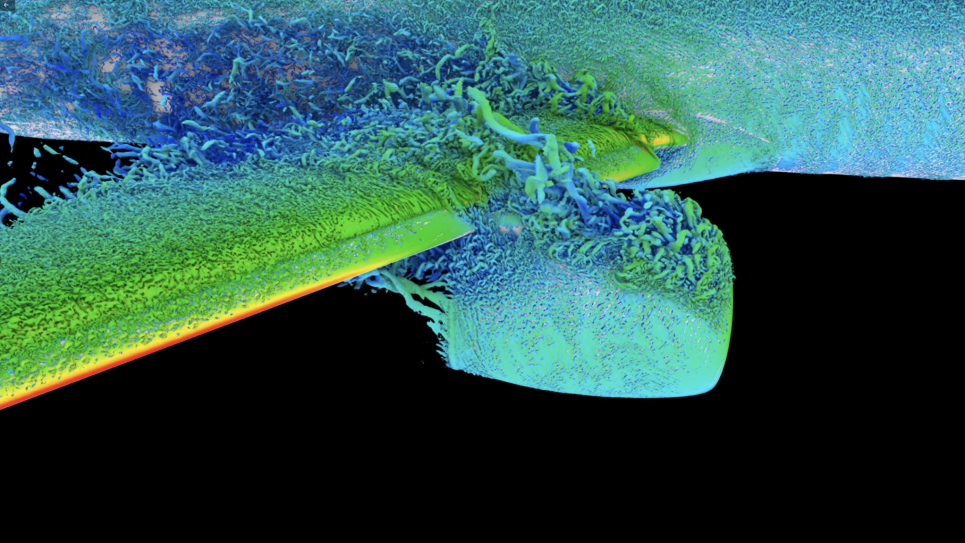
Typical FUN3D WMLES simulation near stall conditions, showing isosurfaces of Q-criterion colored by Mach number.
A current goal for the aircraft industry is to unambiguously demonstrate consistently accurate predictive computations of high-lift flows. If this objective can be realized, computations may facilitate a simulation-based approach to certification, thereby significantly reducing the cost of bringing a new aircraft to market while continuing to meet strict safety guidelines.
According to the Federal Aviation Administration, the commercial aviation industry plays a key role in the overall health of the U.S. economy, which motivates a strong need to maintain leadership in this critical industry. One of the key cost drivers in the design and certification of a new transport aircraft is the ability to reliably and accurately predict the maximum lift the vehicle can achieve, particularly during the takeoff and landing phases of flight. For this reason, the global aerospace industry has identified the accurate prediction of high-lift flows using computational fluid dynamics as a top priority.
Historically, certification requirements for a new aircraft have been met through wind tunnel experiments and flight test campaigns. A substantial portion of a typical flight test campaign required for certification focuses on the low-speed performance characteristics associated with the takeoff and landing phases of flight. A current goal for the aircraft industry is to unambiguously demonstrate consistently accurate predictive computations of high-lift flows. If this objective can be realized, computations may facilitate a simulation-based approach to certification, thereby significantly reducing the cost of bringing a new aircraft to market while continuing to meet strict safety guidelines.
The exascale-class Frontier and Aurora systems offer unique and timely computational power to evaluate the viability of high-fidelity, eddy-resolving methods as an enabling technology for the use of computations in aircraft certification. In this effort, NASA Langley Research Center proposes a series of high-lift simulations supporting a grid refinement study at flight-relevant conditions. The simulations align with planned wind tunnel testing at the National Transonic Facility. NASA computational resources will be used to perform simulations on coarser mesh levels with relatively large time steps, while Frontier and Aurora will be used to evaluate solutions on substantially finer meshes with appropriately smaller time steps. Successful execution offers the potential to dramatically reduce costs associated with extensive physical testing campaigns, accelerating the time to market for new designs and ultimately ensuring that the U.S. remains positioned at the forefront of the global aviation community